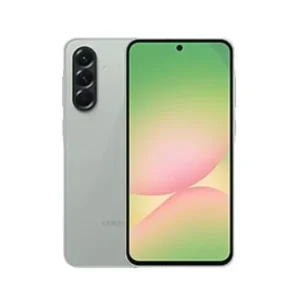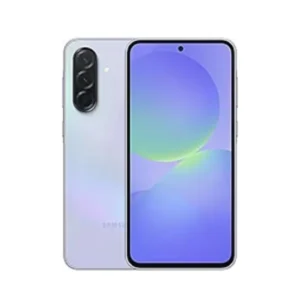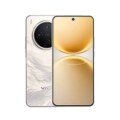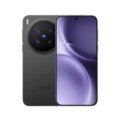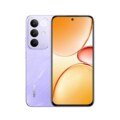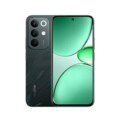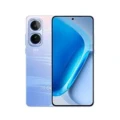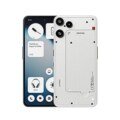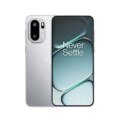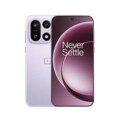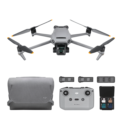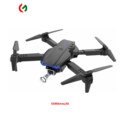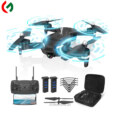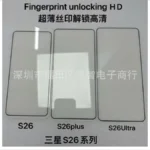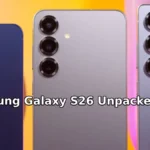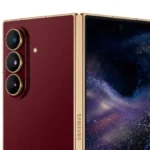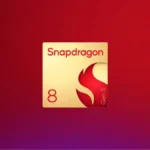- Home
- GSMArena UAE
- Compare
- Samsung Galaxy A56 vs Galaxy A36 Comparison : Specs & Features
Samsung Galaxy A56 vs Galaxy A36 Comparison : Specs & Features
The Samsung Galaxy A56 and Galaxy A36 are two exciting mid-range smartphones packed with powerful features. The Galaxy A56 boasts a larger display, a more advanced processor, and a bigger battery, making it ideal for heavy users. On the other hand, the Galaxy A36 offers a compact design, excellent camera capabilities, and a budget-friendly price. Both phones come with Samsung’s signature One UI, ensuring a smooth user experience. If you’re looking for better performance, the A56 is the winner, while the A36 is perfect for those who prefer affordability without compromising on quality. Which one suits your needs best?
Build
| OS | Android 15, up to 6 major Android upgrades Android 15, up to 6 major Android upgrades |
| UI | One UI 7 One UI 7 |
| Dimensions | 162.2 x 77.5 x 7.4 mm (6.39 x 3.05 x 0.29 in) 162.9 x 78.2 x 7.4 mm (6.41 x 3.08 x 0.29 in) |
| Weight | 198 g (6.98 oz) 195 g (6.88 oz) |
| SIM SIM (Subscriber Identity Module) is a small card that contains mobile network subscriber's account information. This allows the phone using the card to attach to a mobile network. The SIM card is most commonly associated with GSM and UMTS mobile networks. Moving a SIM card from one phone to another allows a subscriber to switch mobile phones without having to contact their mobile network carrier. SIM cards can also be used by a phone to store limited amounts of data, such as phone numbers and text messages. | Nano-SIM + Nano-SIM + eSIM + eSIM (max 2 at a time) Nano-SIM + Nano-SIM + eSIM + eSIM (max 2 at a time) |
| Colors | Pink, Olive, Graphite, Lightgray Lavender, Black, White, Lime |
Frequency
| 2G Band | GSM 850 / 900 / 1800 / 1900 GSM 850 / 900 / 1800 / 1900 CDMA 800 |
| 3G Band | HSDPA 850 / 900 / 1700(AWS) / 1900 / 2100 HSDPA 800 / 850 / 900 / 1700(AWS) / 1900 / 2100 |
| 4G Band | 1, 2, 3, 4, 5, 7, 8, 12, 17, 20, 25, 26, 28, 32, 38, 40, 41, 66 LTE |
| 5G Band | 1, 3, 5, 7, 8, 20, 28, 38, 40, 41, 66, 77, 78 SA/NSA/Sub6 SA/NSA/Sub6 |
Processor
| CPU CPU (Central Processing Unit) mostly known as processors, CPU processes instructions in order to carry out certain functions that make your device operate properly. Processors are often described as the brain of computers, smartphones and tablets, Smartphones and tablets rely on processors to carry out their every task, Processors are an incredibly important factor in selecting any type of computing device, including your smartphone. | Octa-core (1x2.9 GHz & 3x2.6 GHz & 4x1.9 GHz) Octa-core (4x2.4 GHz Cortex-A78 & 4x1.8 GHz Cortex-A55) |
| Chipset Chipset is a group of integrated circuits designed to perform one or a more dedicated functions, often with real time computing constraints, Popular smartphones are equipped with more advanced embedded chipsets that can do many different tasks depending on their programming. | Exynos 1580 (4 nm) Qualcomm SM6475-AB Snapdragon 6 Gen 3 (4 nm) |
| GPU GPU (Graphics Processing Unit) is a single-chip processor designed to rapidly manipulate and alter memory to accelerate the creation of images in a frame buffer intended for output to a display, This includes things such as lighting effects, object transformations, and 3D motion. | Xclipse 540 Adreno 710 |
Display
| Technology | Super AMOLED, 120Hz, HDR10+, 1200 nits (HBM), 1900 nits (peak) Super AMOLED, 120Hz, 1200 nits (HBM), 1900 nits (peak) |
| Size | 6.7 inches, 110.2 cm2 (~87.7% screen-to-body ratio) 6.7 inches, 110.2 cm2 (~86.5% screen-to-body ratio) |
| Resolution | 1080 x 2340 pixels, 19.5:9 ratio (~385 ppi density) 1080 x 2340 pixels, 19.5:9 ratio (~385 ppi density) |
| Protection | Corning Gorilla Glass Victus+ Corning Gorilla Glass Victus+ |
| Extra Features | Always-on display Always-on display |
Memory
| Built-in | 128GB 8GB RAM, 256GB 8GB RAM, 256GB 12GB RAM UFS 3.1 128GB 6GB RAM, 128GB 8GB RAM, 256GB 8GB RAM, 256GB 12GB RAM UFS 2.2 |
| Card Slot Memory Card Slot is a special slot for inserting a memory card. Memory cards allow you to expand the phone's built-in memory, A memory card (sometimes called a flash memory card or a storage card) is a small storage medium used to store data such as text, pictures, audio, and video, for use on small, portable or remote computing devices such as mobile phones, mp3 players, digital cameras. |
Camera
| Main |
Triple 50 MP, f/1.8, (wide), 1/1.56", 1.0µm, PDAF, OIS 12 MP, f/2.2, 123˚ (ultrawide), 1/3.06", 1.12µm 5 MP, f/2.4, (macro) Triple 50 MP, f/1.8, (wide), 1/1.96", PDAF, OIS 8 MP, f/2.2, 123˚, (ultrawide), 1/4.0", 1.12µm 5 MP, f/2.4, (macro) |
| Features |
Features Best Face, LED flash, panorama, HDR Video 4K@30fps, 1080p@30/60fps, gyro-EIS Features LED flash, panorama, HDR Video 4K@30fps, 1080p@30/60fps, gyro-EIS |
| Front | Single 12 MP, f/2.2, (wide) Video 4K@30fps, 1080p@30/60fps, 10-bit HDR Single 12 MP, f/2.0, (wide) Video 4K@30fps, 1080p@30fps |
Connectivity
| WLAN | Wi-Fi 802.11 a/b/g/n/ac/6, dual-band, Wi-Fi Direct Wi-Fi 802.11 a/b/g/n/ac/6e, dual-band, Wi-Fi Direct |
| Bluetooth Bluetooth is a wireless communications technology for exchanging data between mobile phones, headsets, computers and other network devices over short distances without wires, Bluetooth technology was primarily designed to support simple wireless networking of personal consumer devices. | 5.3, A2DP, LE 5.3, A2DP, LE |
| GPS GPS The Global Positioning System is a satellite-based radio navigation system, GPS permits users to determine their position, velocity and the time 24 hours a day, in all weather, anywhere in the world, In order to locate your position, your device or GPS receiver must have a clear view of the sky. | GPS, GALILEO, GLONASS, BDS, QZSS GPS, GALILEO, GLONASS, BDS, QZSS |
| Radio | No No |
| USB | USB Type-C 2.0, OTG USB Type-C 2.0, OTG |
| NFC NFC (Near field communication) is a set of standards for smartphones and similar devices to establish peer-to-peer radio communications with each other by touching them together or bringing them into proximity, usually no more than a few inches. | |
| Data | HSPA, LTE, 5G HSPA, LTE, 5G |
Features
| Sensors Sensors are electronic components that detects and responds to some type of input from the physical environment. The specific input could be light, heat, motion, moisture, pressure and location, The output is generally a signal that is converted to use in computing systems, a location sensor, such as a GPS receiver is able to detect current location of your electronic device. |
Fingerprint (under display, optical), accelerometer, gyro, compass Virtual Proximity Sensing Circle to Search Fingerprint (under display, optical), accelerometer, gyro, compass Virtual Proximity Sensing Circle to Search |
| Audio | Loudspeaker Yes, with stereo speakers 3.5mm jack No Loudspeaker Yes, with stereo speakers 3.5mm jack Yes |
| Browser | HTML5 HTML5 |
| Messaging | SMS(threaded view), MMS, Email, Push Mail, IM SMS(threaded view), MMS, Email, Push Mail, IM |
| Games | Built-in + Downloadable Built-in + Downloadable |
| Extra | IP67 dust/water resistant (up to 1m for 30 min) IP67 dust/water resistant (up to 1m for 30 min) |
Battery
| Battery Type Battery Type => Cell phones run on various kinds of batteries depending on the manufacturer, phone size or shape and features. There are basically four types of cell phone batteries => Lithium Polymer, Lithium Ion, Nickel Metal Hydride and Nickel Cadmium. | 5000 mAh Li-Po 5800 mAh |
| Charging | 45W wired, 65% in 30 min, 100% in 68 min 45W wired, 66% in 30 min, 100% in 68 min |


|
Disclaimer Note
We can not guarantee that the information on this page is 100% correct.
